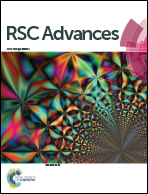New perspective of a nano-metal preparation pathway based on the hexahydro-closo-hexaborate anion
Abstract
Today, metal-based nanomaterials play an increasingly important role in the energy, environment, medical and health fields. In order to meet the needs of various fields, it is necessary to continuously develop advanced technologies for preparing metal-based materials. Inspired by previous research, the results of a proof-of-concept experiment show that the hexahydro-closo-hexaborate anion (closo-[B6H7]−) in the borane cluster family has properties similar to NaBH4. Closo-[B6H7]− can not only convert common precious metal ions such as Au3+, Pd2+, Pt4+ and Ag+ to the corresponding zero-valence state, but also convert some non-precious metals such as Cu2+ and Ni2+ to the zero-valent or oxidation state. Closo-[B6H7]− moderate reduction to cause rapid aggregation of metal-based materials is not easy compared with NaBH4. Compared with closo-[B12H12]2−, closo-[B6H7]− achieves the conversion of Pt4+ to Pt0 under ambient conditions, and its reduction performance extends to non-precious metals. The excellent stability and easy modification characteristics determine the universality of the closo-[B6H7]− reduction strategy for metal ions.



 Please wait while we load your content...
Please wait while we load your content...